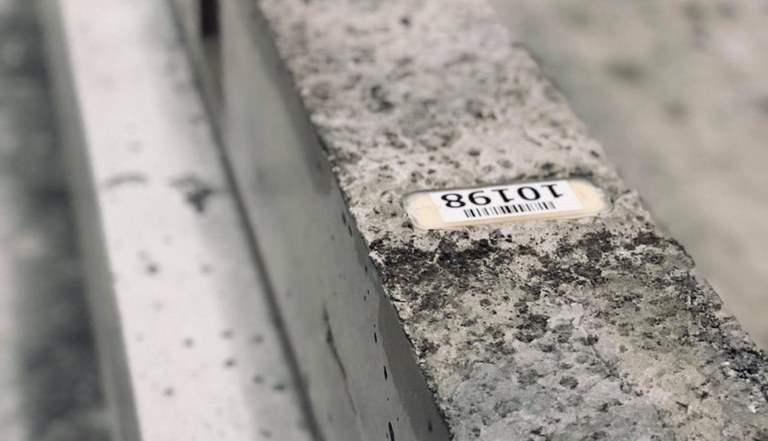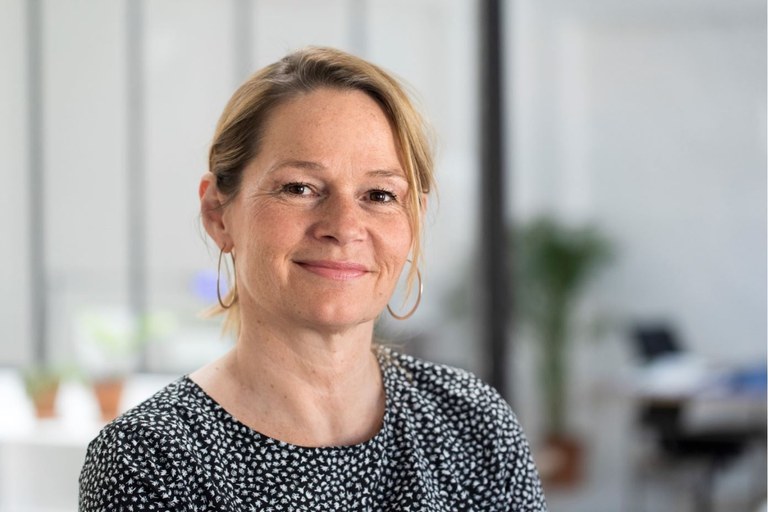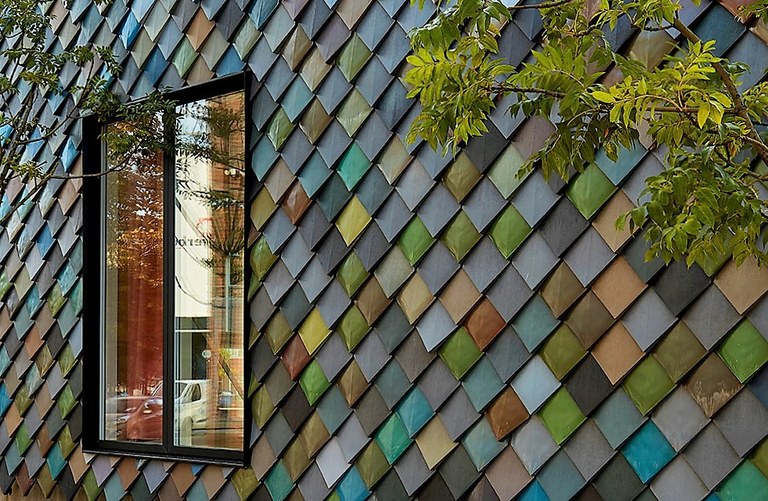Danish world first: a circular and sustainable building
In 2023, 60 Danish families will move into a cutting edge building made from climate-friendly materials that can be recycled or reused. This kind of sustainable and circular construction is being accelerated and the Nordics are playing an important role.
In early 2023, 60 new apartments in a suburb of Denmark’s second city Aarhus will get their first residents. This will be different from all other housing projects in the world – a so-called circular building where it should be possible to separate and reuse 90% of all the construction materials, explains Jesper Kort Andersen.
 He is the project leader at the Lejerbo social housing association, which is behind the historic building.
He is the project leader at the Lejerbo social housing association, which is behind the historic building.
“As a social housing association it is part of our heritage to take social responsibility, and the climate crisis is a real threat to our society. In this context, buildings are bad for the climate. That’s why it is natural for us to contribute to the solution to the future climate challenge, and now we will be the first to construct a block of flats according to the principles of circular buildings.”
In 2021, Lejerbo chose the main entrepreneur that will construct the circular housing unit, which has been named Circle House. Lejerbo defined several circular criteria in their tender, including:
Materials with so-called material passports are preferred – i.e. all ingredients in a building material are declared, allowing for a full overview of their purity and CO2 footprint through easily accessible data.
 Finding the CO2 footprint for the building materials should be straight forward.
Finding the CO2 footprint for the building materials should be straight forward.
The building should be constructed in accordance with “Design for separation” – which means parts can be changed without the need to change major building systems, and that they can be reused.
A need for standards
Both material passports and design for separation are crucial if architects, entrepreneurs and builders are to build and renovate buildings in ways that impact less on the climate, says Tine Lange, owner of the consultancy firm Responsible Assets, who advises the Danish construction industry on sustainable construction.
“We will only reach the climate goals if the construction industry’s large climate footprint is drastically reduced, so it is urgent that the industry starts using, recycling and reusing environmentally friendly construction materials.
"We need common standards for how to calculate and share data on the contents of various construction materials, and their "life cycle" climate impact. With this in place, the construction industry can figure out how to use environmentally friendly materials and build in an environmentally friendly way.”
 Environmentally friendly buildings need standards, thinks Tine Lange, who advises the Danish construction industry on sustainable buildings.
Environmentally friendly buildings need standards, thinks Tine Lange, who advises the Danish construction industry on sustainable buildings.
To get to this point is no easy task, however. There are no national, Nordic nor international standards for sustainable and circular construction, but work is being done to get there. Danish Standards and its European sister organisations are among those who have begun looking at this, explains Tine Lange.
A Nordic advantage
She also sees the Nordic cooperation as an obvious forum for developing standards and sharing good experiences with environmentally friendly construction.
“Right now it is extremely important to share all good experiences with sustainable and circular construction which all countries can benefit from. Sweden, for instance, has come far when it comes to developing material passports, and that knowledge can be shared through the Nordic cooperation. The Nordics can also speak with one strong voice in international fora in order to create a global solution to the environmental impact of the construction industry.”
Nordic housing and construction ministers launched a four-year action plan in 2020 with measures aimed at making the housing and construction sector more environmentally friendly through a range of innovative and green solutions. The aim for the Nordics to become leaders in sustainable and competitive housing and construction with lower environmental impact.
Tine Lange believes that if the Nordics work quickly and wisely together, their construction industries will gain considerable global competitive advantages.
“Everyone now knows that the construction industry’s environmental impact must be reduced, and if the Nordic region creates joint solutions and ambitious competitive conditions for sustainable construction, the demand could explode – as it did for Danish wind turbine technology.”
Both recycling and reuse
Tine Lange sees the Circle House project as an important pioneer project where all the housing association’s experiences with developing material passports and design for separation will be made available for the construction industry as a whole. Yet she believes other measures must be put in place in order to create volume when it comes to sustainable construction.
 Finding ways to reuse and recycle building materials is becoming urgent.
Finding ways to reuse and recycle building materials is becoming urgent.
She supports a CO2 tax and hopes that in time it will be a legal requirement to document all building materials’ CO2 footprint. She also firmly believes that the recycling of building materials has a greater potential than direct reuse.
“Right now there is a lot of focus on reusing, where a building’s elements are taken out and given new life somewhere else. But this process is so far quite ‘hands-on’ and time-consuming, so it won’t solve the construction industry’s main climate challenge on its own. To create enough volume for sustainable construction you need a commercial market for the reuse of construction materials, and to recycle parts of wasted construction materials in new construction products.”
You need material passports for both reuse and recycling – precise data for what each construction material contains and its CO2 footprint.
Official demands
In order to create scale for sustainable construction, it will also be necessary to stimulate demand. If not, builders and entrepreneurs will go on choosing what they always do. That is why state, regional and local authorities should make sustainability a prerequisite when putting projects out to tender. This would really make the construction industry work seriously with sustainable construction, expects Trine Lange. Right now she is working with a team of lawyers and architects to prepare public construction tenders designed for reuseable or recyclable products.
The Nordic Council of Ministers’ Secretary-General Paula Lehtomäki has also said large property owners and municipalities, regions and states should be at the forefront of promoting a more sustainable and climate-friendly constriction industry.
She has highlighted the importance of the Nordic countries working together to develop ways of reducing the environmental impact of the construction industry throughout building materials’ “lifespan” – from production through construction to the finished construction. This data should be easily accessible, and maximum permissible limits should be set for CO2 footprint per square metre. The total climate budget for building materials should have to stick to this limit.
The Secretary-General said all this in a speech on 23 March this year as part of the EU project New European Bauhaus. The EU Commission had invited Nordic architects, engineers and builders to give advice on how to achieve sustainable construction and good design to the benefit of users.
“Establishing maximum permissible limits is no easy task. It is important to work together on how to calculate this, on data and on skills development for all of our architects and engineers,” said Paula Lehtomäki.
Sustainability benefits residents
For Lejerbo, developing Circle House has revealed new opportunities for how to improve quality for the residents. It turns out that healthy and reusable materials improve the indoor climate, and it reduces costs linked to renovation which means you can keep rents low, explains project leader Jesper Kort Andersen.

Circle House also improves the residents' quality of living.
“For us, it has been important that the construction has been both circular and that it has increased housing quality for residents. We have been positively surprised that circularity and high housing quality go hand in hand. Circular construction is not just a duty and an expense, it also brings with it many advantages.”
Lejerbo share some of their experiences on the Circle House Lab network where 70 Danish construction companies work together to find solutions. Among them is Danish Standards, who use the companies’ input to create new standards for circular construction.
Danish strategy for sustainable construction
The Danish government has been working with the Left, the Danish People’s Party, the Red-Green Alliance, the Danish Social Liberal Party, the Socialist People’s Party and the Alternative to reach an agreement securing the introduction of CO2 limits for all larger construction companies from 2023. From 2025, there will be CO2 limits for new builds in general.
“This agreement will bring the construction industry into a new, green age where environmentally friendly solutions go hand in hand with healthy, good and cheap buildings,” said the Minister for Building and Housing Kaare Dybvad Bek as the agreement was announced on 5 March 2021.
- A small demonstration version
-
of Circle House can be found in Copenhagen, giving an idea of what the future circular lighthouse project will look like.
- About Circle House
-
- A housing project with 60 social housing apartments with shared areas in Lisbjerg, near Aarhus.
- The world’s first social housing project built according to circular principles. This means that the building can be taken apart again and the aim is that 90% of the materials being used for the buildings can be reused without losing significant value.
- The construction was put out to tender and is being built according to market conditions.
- Circle House is a scalable lighthouse project for circular construction, which develops and shares knowledge about circular construction across the sector.
- The project has had support from Realdania and the Ministry of Environment’s development and demonstration programme (MUDP).
 Follow us on Facebook
Follow us on Facebook
